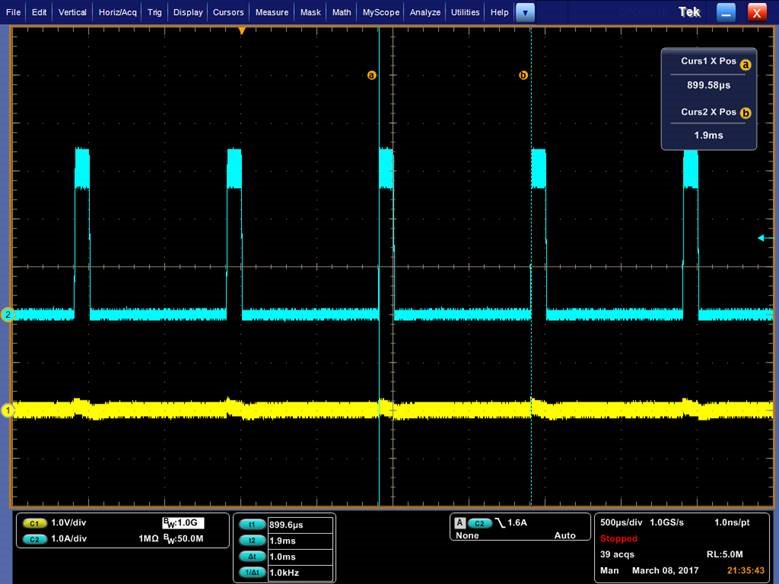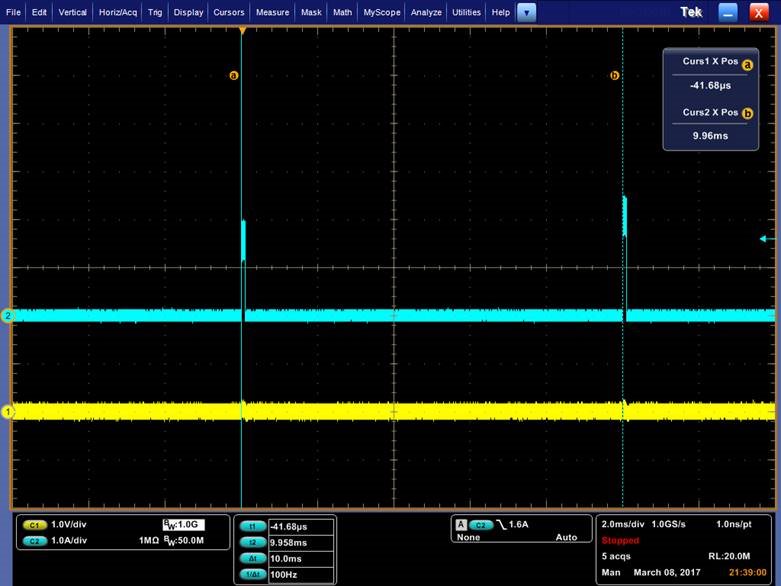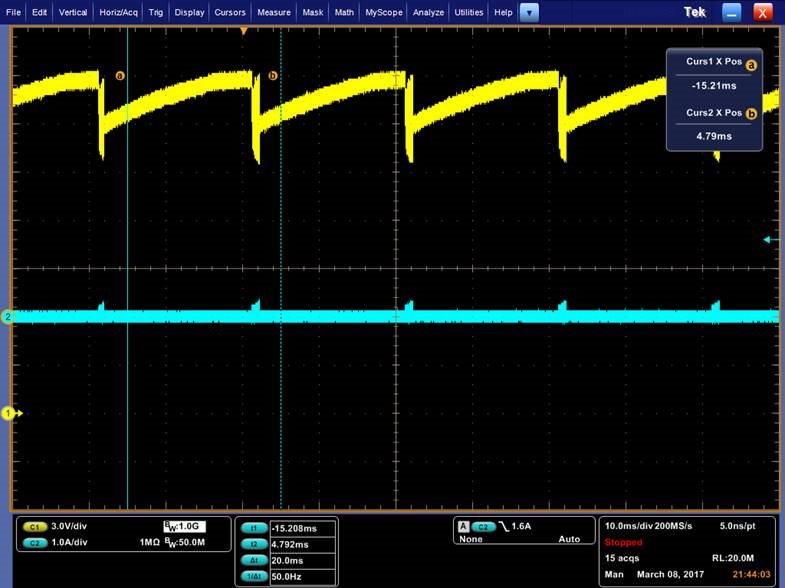Other Parts Discussed in Thread: LM3429
Hi, I have a question regarding use of the LM3409. We need to drive a LED string somewhere between 3A and 6A pulsed (will be fixed in the design) . The pulse width can be between 100us and 8ms and the frequency between 10Hz to 30Hz. We tried the LM3409 evaluation board and it works fine at 1A and a frequency of 30Hz. But if I change the Sense Resistor to set the current to 3A, it doesn’t work at 30Hz. I need to increase the frequency to around 60 to 100Hz to make it work. I guess it might be related to COFF filter or the inductor. Am I right?
Currently, I am planning to use an external FET to bypass the LED string and pulsing the FET between 10 and 30Hz. Do you see an issue with this configuration? In the system my input voltage is 24V and the LED string voltage is around 14V at 3A. I also used the WEBENCH to parameterize my design at 6A and it came out with key components of 0.04 Ohms for the sense resistor and an 22uH inductor.
Do you see any potential issue using this part or do you have something else to suggest for my design?
Thanks for any insight you can provide!
Ethan




